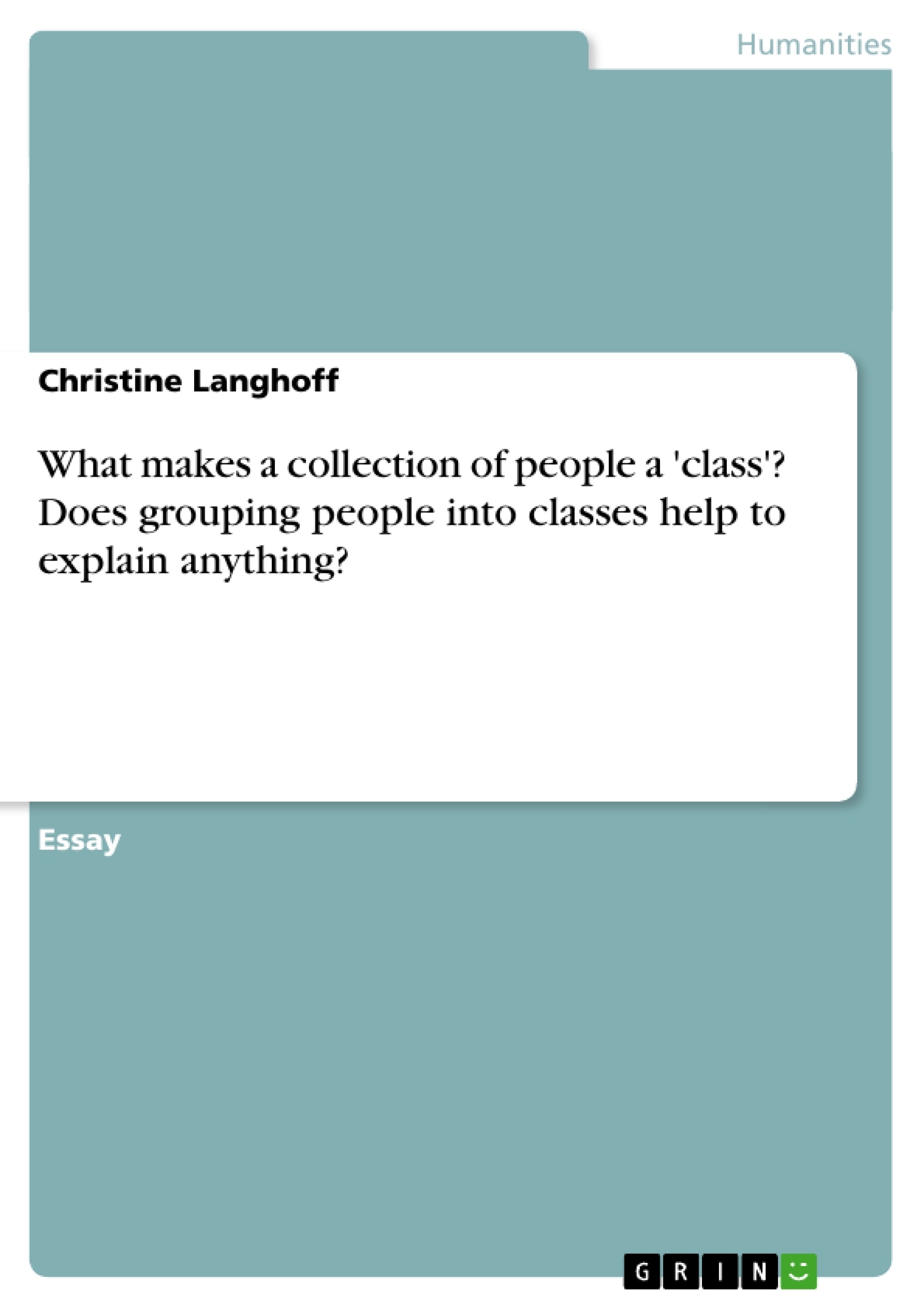Class is a concept much used in both sociology as well as everyday language, but it
is surrounded by much confusion about its meaning. There are many different
definitions of class and many different views on how people can be grouped into
classes. In sociology there is an ongoing debate whether or not class is a relevant
concept in contemporary societies and whether it can be used to explain any issues. I
am going to look at the different meanings of “class”. Further I am going to
investigate whether grouping people into classes helps to explain anything.
The use of class to indicate lifestyle, prestige or rank is probably the most commonly
used sense of the term. Here class is bound up with hierarchy, of being higher than
or lower than some other person or group. Rank is often indicated by lifestyles and
particular patterns of consumption. Marx and Weber have provided two of the most
influential explanations about what classes are and how they influence society. Marx
believed that systems of stratification derive from the relationships of social groups to
the means of production. He used the concept class as referring to the main strata in
all stratification systems. A class is a social group whose members share the same
relationship to the means of production with the ruling class oppressing the subject
class. He argued that on the one hand there exists a “class in itself” which is just the
relationship of the social group to the means of production, but on the other hand a
social group only fully becomes a class when it becomes a “class for itself”, when its
members have class consciousness and class solidarity.
Inhaltsverzeichnis (Table of Contents)
- What makes a collection of people a “class”? Does grouping people into classes help to explain anything?
- Class as prestige, status, culture or ‘lifestyles’
- Class as structured inequality (related to the possession of economic and power resources)
- Class as actual or potential social and political actors
- Class-differentiated lifestyles
- Class schemes in sociology
- Classes as structures of material inequality
- Classes as social forces or social actors
- Class as a source of social inequality and a source of social and political identity, consciousness and action
- The use of class to explain social inequality
- The meritocratic argument
- Problems with class analysis
- Problems with class schemes
Zielsetzung und Themenschwerpunkte (Objectives and Key Themes)
This text explores the concept of class in sociology and investigates whether grouping people into classes helps to explain social phenomena. It examines different meanings of "class" and analyzes the relationship between class and social inequality, mobility, and action.
- The various definitions and meanings of "class" in sociology
- The relationship between class and social inequality
- The role of class in explaining social mobility and life chances
- The impact of class on social and political action
- The challenges and limitations of using class as a concept for analyzing social phenomena
Zusammenfassung der Kapitel (Chapter Summaries)
- The text begins by defining the concept of class and explores different interpretations of the term, including class as a measure of prestige, status, and lifestyle. It also examines class as a reflection of structured inequality and as a representation of social and political actors.
- The text then delves into the concept of class-differentiated lifestyles, highlighting how occupations are often ranked according to their perceived prestige and social standing. It examines different class schemes in sociology, including commonsense schemes, indexes of occupational prestige, and relational or theoretical class schemes.
- The text explores the use of class as a general description of structures of material inequality, emphasizing how class can reflect differential access to economic and power resources. It examines how classes have been identified as actual or potential social forces or actors with the capacity to transform society.
- The text examines the relationship between class and social inequality, focusing on the evidence for social mobility and the impact of class on life chances. It presents research findings from the Essex study and the Oxford Mobility Study, which suggest that social inequality is significantly influenced by class background.
- The text explores the meritocratic argument, which suggests that inequalities in contemporary societies are due to individual differences in ability and effort rather than class. It presents critiques of the meritocratic view, arguing that market forces do not always reward merit and that class background continues to have a significant impact on social mobility.
- The text concludes by outlining several problems associated with class analysis, including the challenges of defining a class, the evolving nature of employment patterns, and the limitations of traditional class schemes in capturing the complexity of contemporary social structures.
Schlüsselwörter (Keywords)
The main keywords and focus topics of this text include: class, social inequality, social mobility, class consciousness, class action, occupational prestige, class schemes, meritocracy, social stratification, social change, employment patterns, and gender.
- Citation du texte
- BA (Oxon), Dip Psych (Open) Christine Langhoff (Auteur), 2003, What makes a collection of people a 'class'? Does grouping people into classes help to explain anything?, Munich, GRIN Verlag, https://www.grin.com/document/14015




